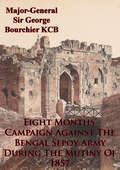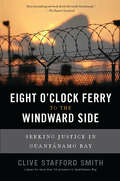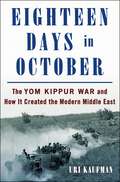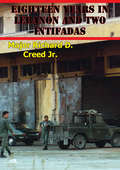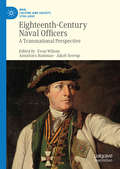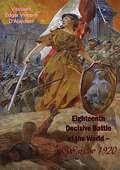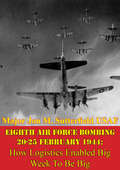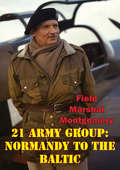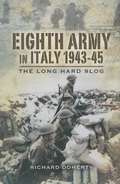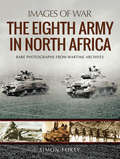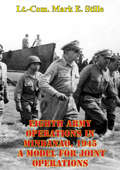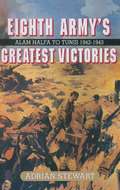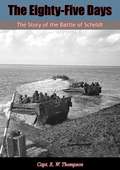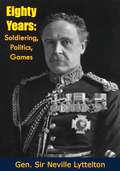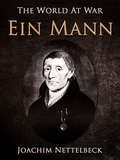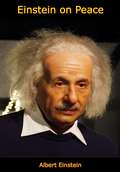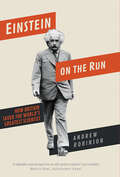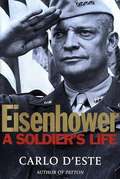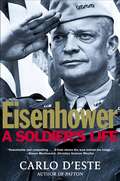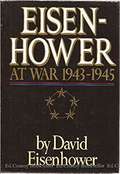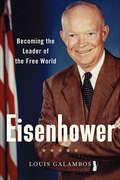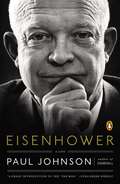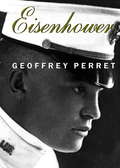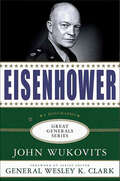- Table View
- List View
Eight Months’ Campaign Against The Bengal Sepoy Army During The Mutiny Of 1857 [Illustrated Edition]
by Major-General Sir George Bourchier KCB[Illustrated with over one hundred maps, photos and portraits, of the battles, individuals and places involved in the Indian Mutiny]"The Indian Mutiny from the siege of Delhi to the mutineers' defeat at Cawnpore, via the relief of Lucknow. Written by an officer of the British Horse Artillery.An account of the Indian Mutiny in 1857 by a British participant. The author, Col. Bourchier of the Bengal Horse Artillery, describes the British siege and storming of Delhi - including the foiling of a fiendish plan to intoxicate the besieging forces; the defeat of the mutineers at Agra; the siege and massacre at Cawnpore; the relief of Lucknow by Havelock and Outram and its second relief by Sir Colin Campbell; and finally the defeat of the Gwalior mutineers at Cawnpore. An action-packed account of eight months' of remorseless fighting."-Print Ed.
Eight O'Clock Ferry to the Windward Side: Seeking Justice in Guantánamo Bay
by Clive Stafford SmithEvery time human rights lawyer Clive Stafford Smith lands in Cuba, he takes the eight o'clock ferry to the windward side; his journey ends at Guantánamo Bay. One of the few people in the world who has ongoing independent access to the prison, Smith reveals the grotesque injustices that are perpetrated there in the name of national security-including the justifications created to legitimate the use of torture and the bureaucratic structures that have been put in place to shield prison authorities from legal accountability. <P><P>By bearing witness to the stories of the forty prisoners that he represents, Smith asks us to consider what is done to American democracy when the rule of law is jettisoned in the name of combating terrorism.
Eighteen Days in October: The Yom Kippur War and How It Created the Modern Middle East
by Uri Kaufman"[Kaufman] tells the story brilliantly. Anyone interested in the Middle East or military history will appreciate Kaufman’s work."—Senator Joseph I. Lieberman "Stimulating and insightful...will no doubt find a permanent place on the Arab-Israeli bookshelf."—Michael Oren, New York Times bestselling author of Six Days of WarOctober 2023 marks the 50th anniversary of the Yom Kippur War, a conflict that shaped the modern Middle East. The War was a trauma for Israel, a dangerous superpower showdown, and, following the oil embargo, a pivotal reordering of the global economic order. The Jewish State came shockingly close to defeat. A panicky cabinet meeting debated the use of nuclear weapons. After the war, Prime Minister Golda Meir resigned in disgrace, and a 9/11-style commission investigated the “debacle.”But, argues Uri Kaufman, from the perspective of a half century, the War can be seen as a pivotal victory for Israel. After nearly being routed, the Israeli Defense Force clawed its way back to threaten Cairo and Damascus. In the war’s aftermath both sides had to accept unwelcome truths: Israel could no longer take military superiority for granted—but the Arabs could no longer hope to wipe Israel off the map. A straight line leads from the battlefields of 1973 to the Camp David Accords of 1978 and all the treaties since. Like Michael Oren’s Six Days of War, this is the definitive account of a critical moment in history.
Eighteen Years In Lebanon And Two Intifadas: The Israeli Defense Force And The U.S. Army Operational Environment
by Major Richard D. Creed Jr.This monograph determined that the tactical and strategic experience of the Israeli Defense Force (IDF) since 1981 was relevant to the future operational environment of the U.S. Army. The IDF's experiences are relevant because the Israeli Army was similarly equipped and organized to the heavy units in the U.S. Army, both then and now. Israel faced a similar full spectrum threat, and the IDF had to adapt to enemies who switched to asymmetric methods in order to overcome Israel's conventional military superiority. The IDF of 1981 paralleled the U.S. Army of the 2000 in many ways. It was a mechanized heavy force designed to conduct operations against a Soviet armed and equipped enemy. It fought and defeated some of those enemies decisively eight years previously. Beginning with the invasion of Lebanon (Operation "Peace for Galilee"), the IDF discovered that there were no peer competitors willing to fight it on its own terms. The nature of war changed for the IDF in sometimes unexpected ways, and it struggled to adapt to its changing operational environment. The IDF operational environment became much more complicated, because while it retained the old threats in the form of its Arab neighbors, it added sustained guerrilla war and civil insurrection.
Eighteenth-Century Naval Officers: A Transnational Perspective (War, Culture and Society, 1750 –1850)
by Evan Wilson AnnaSara Hammar Jakob SeerupThis book surveys the lives and careers of naval officers across Europe at the height of the age of sail. It traces the professionalization of naval officers by exploring their preparation for life at sea and the challenges they faced while in command. It also demonstrates the uniqueness of the maritime experience, as long voyages and isolation at sea cemented their bond with naval officers across Europe while separating them from landlubbers. It depicts, in a way no previous study has, the parameters of their shared experiences—both the similarities that crossed national boundaries and connected officers, and the differences that can only be seen from an international perspective.
Eighteenth Decisive Battle of the World – Warsaw 1920
by Viscount Edgar Vincent D'AbernonAfter the cataclysmic events of the First World War officially ended on the Western Front in 1918, the Democratic Western Powers were still faced with the fallout of the struggle for power in Russia. There was a very real chance that the Communist contagion would transfer across the borders of Russia to Eastern Europe, as it would do some two decades later. Viscount Edgar Vincent D'Abernon was head of the Interallied Mission to Poland and was eye-witness to the struggle in Poland that culminated in the battle for Warsaw that saw the red tide turned back.“The 18th most decisive battle in history...Had the Battle of Warsaw ended with a Bolshevik victory, it would have been a turning point in the history of Europe; as there is no doubt that with the fall of Warsaw, Central Europe would have been left open to Communist propaganda and Soviet invasion.
Eighth Air Force Bombing 20-25 February 1944: How Logistics Enabled Big Week To Be Big
by Major Jon M. Sutterfield USAFEighth Air Force (8AF) conducted the US's first thousand-bomber raids against Germany in February 1944--recorded in history as Big Week. Until that time the USAAF was not able to concentrate such firepower on the enemy in such a short period of time. It took much effort to make Big Week "big" covering the spectrum of planning and execution activities dating back to the end of World War I that were adapted and flexed to be successful in a different context. Indeed, the depth and breadth of the preparations required to successfully execute Big Week on the scale intended is deserving of a closer examination.Leadership from President Roosevelt to first line supervisors influenced 8AF logistics before February 1944. Major General Hugh J. Knerr was the one man that stood out as the champion of USAAF logistics. He influenced the concept of logistical operations in the ETO and, more specifically, put logistics on a level of importance equal to that of operations within the United States Strategic Air Forces (USSTAF). He synchronized logistics with operations and strove for constant improvement by making organizational and process changes aimed at increasing logistical responsiveness, effectiveness, and efficiency.The British provided tremendous host nation support including construction of new airfields, skilled and unskilled labor support, supply items, and transportation. The British host nation support 8AF received far surpassed what a cursory review of World War II history leads one to believe and serves as a model for US-led coalition operations in the 21st century. The US Merchant Marine and US Navy provided sealift of goods from the stateside depots to the theater. The US Army provided supply support of common items and Air Service Command (ASC) provided technical and supply support. Last, but not least, both civil servants and civilian contractors provided depot maintenance and in-theater technical support.
Eighth Army: El Alamein To The River Sangro [Illustrated Edition] (Memoirs Of Field Marshal Montgomery #2)
by Field Marshal Viscount Bernard Law Montgomery of Alamein KG GCB DSO PC[Illustrated with 16 highly detailed maps of the actions]Field Marshal Montgomery commanded the Eighth Army from 13th August 1942 until the 31st December 1943, and the 21st Army Group from 1st January 1944 until the German surrender on the 5th May, 1945. Whilst in command of the British Army of the Rhine, in occupation of Germany, shortly after the end of the Second World War Montgomery set out to record the exploits and victories of the troops under his command.Both this volume and its companion volume, Normandy to the Rhine, are superb examples of military history as presented by one of the greatest generals to command victorious armies in the field. The texts are taken from his personal war diaries and are distinguished by his incisive style. The whole strategy and course of these two campaigns are presented to the reader with great clarity and accuracy.El Alamein to the River Sangro is as he himself writes '... an authoritative account of the activities of the Eighth Army in the days of its greatest, successes'. El Alamein was the turning point in the war: from that momentous battle the tide against Germany turned. During the time the Eighth Army was commanded by Monty it lost not a single action, and when Monty was transferred to Europe in December 1943, Winston Churchill wrote to him: 'The immortal march of the Eighth Army from the gates of Cairo along the African shore, through Sicily, has now carried its ever victorious soldiers far into Italy towards the gates of Rome. The scene changes and vastly expands. A great task accomplished gives place to a greater, in which the same unfailing spirit will win for all true men a full and glorious reward.'
Eighth Army in Italy, 1943-45: The Long Hard Slog
by Richard DohertyEighth Army, Britain's most famous field army of the twentieth century, landed in Italy in September 1943 and fought continously until the defeat of the Germans in early-May 1945. This book studies the experience of Eighth Army in the Italian campaign, examining how a force accustomed to the open spaces of North Africa adjusted to the difficult terrain of Italy where fighting became much more a matter for the infantry than for the armour. It also compares the qualities of the commanders of Eighth Army in Italy: Montgomery; Leese and, finally, McCreery. The book uses official records at various levels, personal accounts - some never before published - and published material to present a picture of an army that, although defined as British, was one of the war's most cosmopolitan formations. Its soldiers came from the UK, Canada, India, Ireland, Nepal, New Zealand, Poland and South Africa as well as from Palestine - the Jewish Brigade - and from Italy itself.
The Eighth Army in North Africa: Rare Photographs From Wartime Archives (Images of War)
by Simon FortyA pictorial history of the British Eighth Army&’s campaigns in Egypt, Libya, and Tunisia during World War II. The British Eighth Army, which played a decisive role in defeating the Axis in North Africa, was one of the most celebrated Allied armies of the Second World War, and this photographic history is the ideal introduction to it. The carefully chosen photographs show the men, weapons, and equipment of the army during campaigns in Egypt, Libya, and Tunisia. The battles the army fought in the Western Desert in 1941 and 1942 are the stuff of legend, as is the second Battle of El Alamein when, under Montgomery, it defeated the German and Italian forces commanded by Rommel. With vivid insight into the fighting and the desert conditions, this book shows what a varied, multinational force the army was, for it brought together men from Britain and the British Empire and Commonwealth as well as Free French, Greeks, and Poles.
Eighth Army Operations In Mindanao, 1945 A Model For Joint Operations
by Colonel Joseph G. Terry Jr.While amphibious operations have historically straddled single service prerogatives and had been conspicuously avoided prior to World War II, in the Pacific area of operations during World War II such operations were abundant, decisive and generally regarded as models of joint service cooperation. Under the legendary General Douglas MacArthur, the Philippine Campaign in 1944-45 was especially noteworthy as a model of a single flexible strategy, unity of command, and joint service cooperation. Yet forty-five years later, our national military experience in joint planning and operations has appeared to regress. The recent Goldwater-Nichols Department of Defense Reorganization Act of 1986, however, has elevated service interest in joint planning and operations. This study briefly discusses the Mindanao Operation (March-July 1945), one of several operations within the Philippine Campaign. The study focuses on the impact of existing joint doctrine on the planning, coordination and execution of operations and evidence of joint action to solve some specific and unique challenges encountered within the operation. A summary of the Mindanao operation and appropriate comments on its applicability as a model for today's joint operations complete this study.
Eighth Army's Greatest Victories: Alam Halfa to Tunis 1942–1943
by Adrian TurnerTo read many accounts, it would appear that the Eighth Army's victory at El Alamein was quickly followed by its triumphant arrival at Tunis. Adrian Turner, the experienced authority on the period, redresses the imbalance by describing brilliantly the progress of this legendary fighting force and describing the ferocity of such battles as that for the Mareth Line. The author deftly handles strategic level thinking, the tactical battles and individual contributions. Aviation readers will be thrilled by recognition of the Desert Air Force's contribution, too often neglected.
The Eighty-Five Days: The Story of the Battle of Scheldt
by Capt. R. W. ThompsonAn explosive story of blunders and courage in the battle that might have brought victory in Europe in 1944.“I believe my book could be described as an attempt at an heroic history of a very long and important battle, which is truly a series of battles. All the events ‘depicted’ in it happened, and if I have erred it has been on the side of understatement, for heroism often is beyond the ordinary use of prose, and if one feels unable to express it beyond a doubt it is better to let it speak for itself in the deed….”—Foreword
Eighty Years: Soldiering, Politics, Games
by Gen. Sir Neville LytteltonBegun in 1914 and first published in 1927, these are the memoirs of General Sir Neville Gerald Lyttelton, a British Army officer who served, in the Sudan, Ireland and most notably the Second Boer War. He draws upon his reminiscences with the aid of correspondence with various members of his family and from his diary entries dating back as far as 1873.A fascinating military history read!
Ein Mann: Des Seefahrers Und Aufrechten Bürgers Joachim Nettelbeck Wundersame Lebensgeschichte (The World At War)
by Joachim NettelbeckJoachim Christian Nettelbeck (* 20. September 1738 in Kolberg; 29. Januar 1824 ebenda) war ein durch seine Rolle bei der Verteidigung Kolbergs im Jahre 1807 und seine Autobiographie bekannter deutscher Volksheld. Als Elfjähriger durfte Nettelbeck auf dem Schiff seines Onkels ausnahmsweise nach Amsterdam mitreisen. Dort schlich er sich im Hafen an Bord eines holländischen Ozeanseglers und kam erst auf offener See wieder zum Vorschein. Das Schiff war ein Sklavenhändler und befuhr das Dreieck Westeuropa - Westafrika - Westindien - Westeuropa. Nach neunmonatiger Reise besuchte Nettelbeck bis zur Konfirmation wieder die Schule in Kolberg. Danach begann er eine Seemannsausbildung, zunächst als Schiffsjunge auf Ost- und Nordseefahrern. (Auszug aus Wikipedia)
Einstein on Peace: His Private Thoughts And Public Stands On Nationalism, Zionism, War, Peace, And The Bomb
by Albert Einstein Otto Nathan“Einstein was not only the ablest man of science of his generation, he was also a wise man, which is something different. If statesmen had listened to him, the course of human events would have been less disastrous than it has been.”This verdict, from the Preface by Bertrand Russell, sums up the importance of this first collection of Albert Einstein’s writings on war, peace, and the atom bomb. In this volume, thanks to the Estate of Albert Einstein, the complete story is told of how one of the greatest minds of modern times worked from 1914 until 1955 on the problem of peace. It is a fascinating record of a man’s courage, his sincerity, and his concern for those who survive him.This book is also a history of the peace movement in modern times. Here are letters to and from some of the most famous men of his generation, including the correspondence between Einstein and Sigmund Freud on aggression and war, and the true story of his famous letter to President Roosevelt reporting the theoretical possibility of nuclear fission. It is the living record of more than forty years of Einstein’s untiring struggle to mobilize forces all over the world for the abolition of war and the creation of a supranational organization to solve conflicts among nations.
Einstein on the Run: How Britain Saved the World's Greatest Scientist
by Andrew RobinsonA "highly readable" account of the role Britain played in Einstein's life—by inspiring his teenage passion for physics and providing refuge from the Nazis (The Wall Street Journal).In late 1933, Albert Einstein found himself living alone in an isolated holiday hut in rural England. There, he toiled peacefully at mathematics, occasionally stepping out for walks or to play his violin. But how had Einstein come to abandon his Berlin home and go “on the run”?This lively account tells the story of the world’s greatest scientist’s time in Britain for the first time, showing why the country was the perfect refuge for Einstein from rumored assassination plots by Nazi agents. Young Einstein’s passion for British physics, epitomized by Newton, had sparked his scientific development around 1900. British astronomers had confirmed his general theory of relativity, making him internationally famous in 1919. Welcomed by the British people, who helped him campaign against Nazi anti-Semitism, he even intended to become a British citizen. So why did Einstein then leave Britain, never to return to Europe?“A vivid look at how the U.K. affected the German-born physicist’s life and thinking.” —Publishers Weekly“A marvelous job of pulling new and interesting material out of the Einstein archives . . . I suspect that even readers who have devoured many books about Einstein and are already familiar with his interactions with the English . . . will find much to learn and enjoy.” —Metascience Journal“Robinson has that rare knack for presenting a near-encyclopedic volume of historical information, anecdotes and contemporaneous accounts in a thoroughly delightful fashion.” —Physics WorldIncludes photographs and illustrations
Eisenhower: A Soldier's Life
by Carlo D'EsteFrom the bestselling author of Patton: A Genius for War comes a compelling new account of the transformation of General Dwight D. Eisenhower, from apprehensive soldier to one of our greatest heros. In the weeks leading up to D-Day, Dwight D. Eisenhower seethed with nervous energy. He had not expected his military career to bring him to this moment. The son of pacifists, Ike graduated from high school more likely to teach history than to make it. Casting new light on this profound evolution, Eisenhower chronicles the unlikely, dramatic rise of the supreme Allied commander. Beginning with the lasting effect of Eisenhower's impoverished youth, bestselling biographer Carlo D'Este follows his subject through West Point and a sometimes troubled marriage; toil under MacArthur in the Philippines during the 1930s; the inner sanctums of the War Department; the general's painful North African apprenticeship; and, finally, the dramatic events leading to the Allied victory in May 1945. Exposing for the first time numerous myths that have surrounded the war hero and his family (such as his romance with his wartime driver, Kay Summersby), D'Este also probes Eisenhower's famous clashes with his American peers and the British chiefs of staff, as well as his relations with legendary figures, including Winston Churchill and George S. Patton. Unlike other biographies of the general, Eisenhower captures Ike's true character, from his youth to the pinnacle of his career and afterward.
Eisenhower: A Soldier's Life
by Carlo D'Este"An excellent book . . . D'Este's masterly account comes into its own." --The Washington Post Book WorldBorn into hardscrabble poverty in rural Kansas, the son of stern pacifists, Dwight David Eisenhower graduated from high school more likely to teach history than to make it. Casting new light on this profound evolution, Eisenhower chronicles the unlikely, dramatic rise of the supreme Allied commander.With full access to private papers and letters, Carlo D'Este has exposed for the first time the untold myths that have surrounded Eisenhower and his family for over fifty years, and identified the complex and contradictory character behind Ike's famous grin and air of calm self-assurance.Unlike other biographies of the general, Eisenhower captures the true Ike, from his youth to the pinnacle of his career and afterward.
Eisenhower: At War 1943-1945
by David EisenhowerThe first volume of a multi-volume study of President Eisenhower, this book focuses on Eisenhower's conduct of the war and provides an extensively documented analysis of the political ramifications of the course of the war and Eisenhower's decisions
Eisenhower: Becoming the Leader of the Free World (The\papers Of Dwight David Eisenhower Ser.)
by Louis Galambos"Highly accessible and sprightly written."—Library JournalWinner of the Kansas State Library's Kansas Notable Book AwardIn this engaging, fast-paced biography, Louis Galambos follows the career of Dwight D. "Ike" Eisenhower, offering new insight into this singular man who guided America toward consensus at home and a peaceful victory in the Cold War.The longtime editor of the Eisenhower papers, Galambos may know more about this president than anyone alive. In this compelling book, he explores the shifts in Eisenhower's identity and reputation over his lifetime and explains how he developed his distinctive leadership skills. As a career military officer, Eisenhower's progress was uneven. Galambos shows how Ike, with the help of Brigadier General Fox Conner, his mentor and patron, learned how to profit from his mistakes, pivot quickly, and grow as a military and civilian leader. On D-Day, Eisenhower guided the largest amphibious force in history to a successful invasion of France and a decisive victory. After the defeat of Nazi Germany, he turned to politics and was elected president in 1952.While today's fiercely partisan political climate makes it difficult to imagine a president forging consensus in Washington, that's exactly what Eisenhower did. As America's leader in an era of profound postwar changes at home and abroad, President Eisenhower sought a middle way with compromise and coalition building. He provided his country with firm-handed leadership, bringing prosperity and peace to the American people in the dangerous years of the Cold War—an accomplishment that made him one of the most influential men of the twentieth century. Destined to be the best short biography of the thirty-fourth president of the United States, Eisenhower conclusively demonstrates how and why this master of the middle way became the successful leader of the free world.
Eisenhower
by Paul JohnsonAcclaimed historian Paul Johnson's lively, succinct biography of Dwight D. Eisenhower explores how his legacy endures today In the rousing style he's famous for, celebrated biographer Paul Johnson offers a fascinating portrait of Dwight D. Eisenhower, focusing particularly on his years as a five-star general and his time as the thirty-fourth President of the United States.Johnson chronicles President Eisenhower's modest childhood in Kansas, his college years at West Point, and his rapid ascent through the military ranks, culminating in his appointment as Supreme Commander of the Allied Forces in Europe during World War II. Beginning when Eisenhower assumed the presidency from Harry Truman in 1952, Johnson paints a rich portrait of his two consecutive terms, exploring his volatile relationship with then-Vice President Richard Nixon, his abhorrence of isolationism, and his position on the Cold War, McCarthyism, and the Civil Rights Movement. Johnson notes that when Eisenhower left the White House at age 70, reluctantly passing the torch to President-elect John F. Kennedy, he feared for the country's future and prophetically warned of the looming military-industrial complex.Many elements of Eisenhower's presidency speak to American politics today, including his ability to balance the budget and skill in managing an oppositional Congress. This brief yet comprehensive study will appeal to biography lovers as well as to enthusiasts of presidential history and military history alike.
Eisenhower
by Paul JohnsonAcclaimed historian Paul Johnson's lively, succinct biography of Dwight D. Eisenhower explores how his legacy endures today In the rousing style he's famous for, celebrated biographer Paul Johnson offers a fascinating portrait of Dwight D. Eisenhower, focusing particularly on his years as a five-star general and his time as the thirty-fourth President of the United States. Johnson chronicles President Eisenhower's modest childhood in Kansas, his college years at West Point, and his rapid ascent through the military ranks, culminating in his appointment as Supreme Commander of the Allied Forces in Europe during World War II. Beginning when Eisenhower assumed the presidency from Harry Truman in 1952, Johnson paints a rich portrait of his two consecutive terms, exploring his volatile relationship with then-Vice President Richard Nixon, his abhorrence of isolationism, and his position on the Cold War, McCarthyism, and the Civil Rights Movement. Johnson notes that when Eisenhower left the White House at age 70, reluctantly passing the torch to President-elect John F. Kennedy, he feared for the country's future and prophetically warned of the looming military-industrial complex. Many elements of Eisenhower's presidency speak to American politics today, including his ability to balance the budget and skill in managing an oppositional Congress. This brief yet comprehensive study will appeal to biography lovers as well as to enthusiasts of presidential history and military history alike.
Eisenhower
by Geoffrey PerretDrawing on newly available material, including Eisenhower's papers and diaries, author and military historian Geoffrey Perret offers a comprehensive portrait of the life, military exploits, political life, and presidency of Dwight D. Eisenhower (1890-1969). He covers several controversies including an alleged dalliance, Eisenhower's break with MacArthur in 1939, his opinion of Nixon, and his role in McCarthy's activities. Annotation c. Book News, Inc., Portland, OR (booknews.com)
Eisenhower: A Biography (Great Generals Series)
by John WukovitsAmerican general and 34th president of the United States, Eisenhower was the principal architect of the successful Allied invasion of Europe during World War II and of the subsequent defeat of Nazi Germany.World War II expert John Wukovits explores Dwight D. Eisenhower's contributions to American warfare. American general and 34th president of the United States, Eisenhower led the assault on the French coast at Normandy and held together the Allied units through the European campaign that followed. The book reveals Eisenhower's advocacy in the pre-war years of the tank, his friendships with George Patton and Fox Conner, his service in the Philippines with Douglas MacArthur, and his culminating role as supreme commander of Allied forces in Europe. Wukovits skillfully demonstrates how Eisenhower's evolution as a commander, his military doctrine, and his diplomatic skills are of extreme importance in understanding modern warfare.
